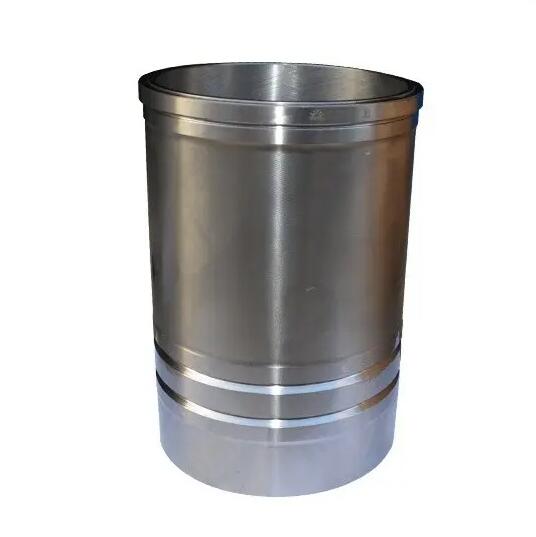Introduction to cylinder liner

The cylinder liner is a cylindrical part, which is placed in the cylinder block hole of the engine block and pressed and fixed by the cylinder head. The piston reciprocates in its inner hole and is cooled by external cooling water.
Due to the action of high-temperature and high-pressure gas and the contact with high-speed piston, the inner surface of the cylinder is easy to wear. In order to improve the wear resistance and prolong the service life of the cylinder, there are different cylinder structure forms and surface treatment methods. According to its structure, there are three types of cylinder liners: non-cylinder liner type, dry cylinder liner type and wet cylinder liner type.
The main body without cylinder liner is the main body without any cylinder liner, and the cylinder is directly processed on the main body. Its advantage is that it can shorten the cylinder center distance and reduce the size and quality of the body. But the cost is high.
The dry cylinder liner is not in contact with the coolant. The wall thickness is 2~3mm. The outer and inner surfaces of the cylinder liner seat hole must be finished to ensure the necessary positioning accuracy and easy disassembly. It has the advantages of large rigidity, small cylinder center distance, light weight and simple processing technology. The disadvantages are poor heat transfer, uneven temperature distribution and easy to cause local deformation.
The outer wall of the wet cylinder liner is in direct contact with the coolant, and the wall thickness is 5~8mm. The radial positioning is achieved by using the upper and lower positioning ring belts, and the axial positioning is achieved by matching the upper flange of the cylinder sleeve with the corresponding bearing surface on the top of the valve body. The advantages of wet cylinder liner are that there is no sealing water jacket on the valve body, easy to cast, good heat transfer, relatively uniform temperature distribution and convenient maintenance. The cylinder liner can be replaced without removing the engine from the vehicle. The disadvantage is that the body is poor in rigidity and easy to leak
Common types of cylinder liners
Commonly used cylinder liners can be divided into dry type and wet type.
The dry-type cylinder liner is a thin-walled cylinder with a wall thickness of 1-3mm. Its feature is that the outer surface of the cylinder liner does not directly contact with the cooling water. The advantage of adopting dry cylinder liner is that the body is rigid and there is no cooling water sealing problem; The disadvantage is that the heat dissipation condition of the cylinder liner is not as good as that of the wet cylinder liner, the machining surface is increased, the cost is high, and the disassembly is difficult.
The wet cylinder liner is a cylinder with a wall thickness of 5-9mm, and its outer wall is in direct contact with the cooling water. Its advantages are convenient disassembly, reliable cooling water and convenient processing. Most diesel engines use wet cylinder liners. The disadvantage is that the body rigidity is poor and the possibility of water leakage is high.





















